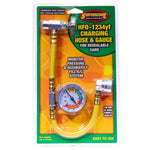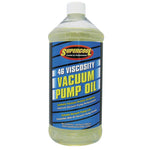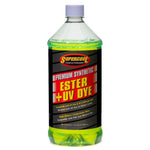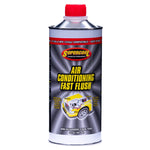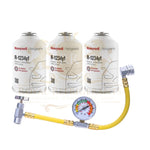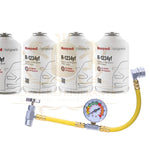You have no items in your shopping cart.
Everything You Need to Know About Tetra Fluoro Ethane for HVAC and Automotive Applications
When it comes to refrigerants used in heating, ventilation, air conditioning (HVAC), and automotive air conditioning systems, Tetrafluoroethane is one of the most widely used and trusted options. Known by its chemical formula C₂H₂F₄, Tetrafluoroethane is commonly referred to as R-134a. It replaced many older refrigerants like R-12 due to its non-ozone-depleting properties, reliable performance, and safety profile. In this guide, we’ll explore everything you need to know about Tetrafluoroethane — from how it works and where it’s used to its environmental impact and availability in the U.S. market.
What Is Tetrafluoroethane (R-134a)?
Tetrafluoroethane is a type of hydrofluorocarbon (HFC) refrigerant that has been widely adopted in HVAC and automotive systems since the 1990s. It was developed as an environmentally safer alternative to chlorofluorocarbons (CFCs) like R-12, which were phased out under the Montreal Protocol due to their harmful effects on the ozone layer.
Tetrafluoroethane has a zero ozone depletion potential (ODP) and moderate global warming potential (GWP), making it a more sustainable option compared to older refrigerants. It is non-flammable, non-corrosive, and chemically stable, which makes it safe and easy to handle in a variety of cooling and refrigeration systems.
Key Properties of Tetrafluoroethane (R-134a)
Here are some important characteristics that make Tetrafluoroethane an excellent choice for HVAC and automotive systems:
- Chemical formula: C₂H₂F₄
- Boiling point: -26.3°C (-15.34°F)
- Molar mass: 102.03 g/mol
- Ozone depletion potential (ODP): 0
- Global warming potential (GWP): ~1430
- Non-flammable and non-toxic
Its physical and chemical properties allow it to absorb and release heat efficiently, which is crucial for effective air conditioning and refrigeration.
Applications in HVAC Systems
Tetrafluoroethane is widely used in residential, commercial, and industrial HVAC systems across the United States. It helps maintain comfortable indoor temperatures by circulating through evaporators and condensers to transfer heat.
Some of its main applications include:
- Residential air conditioning: Used in split and window AC units for homes.
- Commercial HVAC: Ideal for large-scale systems in offices, shopping centers, and hotels.
- Refrigeration systems: Commonly used in commercial refrigerators, freezers, and cold storage facilities.
Because of its reliability and safety profile, R-134a remains a go-to refrigerant for many HVAC manufacturers and technicians in the U.S. market.

Applications in Automotive Air Conditioning
In the automotive industry, Tetrafluoroethane revolutionized vehicle air conditioning when it replaced R-12. It became the global standard for car AC systems in the mid-1990s and is still widely used today, especially in vehicles manufactured before 2017.
Some key reasons why R-134a is ideal for automotive applications include:
- High cooling efficiency: Keeps vehicles cool even in extreme temperatures.
- Safe and stable: Non-flammable and non-reactive with automotive components.
- Easy to service: Compatible with most existing car AC systems and components.
Although newer refrigerants like R-1234yf are being introduced with lower GWP, R-134a remains in use for millions of vehicles still on the road in the U.S.. Its wide availability and affordability make it an attractive option for servicing older cars.
Environmental Impact and Regulations
While R-134a has zero ozone depletion potential, its global warming potential (~1430) is still significant. This has led to tighter environmental regulations, particularly in the European Union and parts of the U.S.
Here’s what you need to know:
EPA SNAP Program:
The U.S. Environmental Protection Agency (EPA) regulates the use and handling of HFC refrigerants like Tetrafluoroethane under the Significant New Alternatives Policy (SNAP).
Phase-down policies:
Although R-134a is still widely available, it is gradually being phased down in favor of lower-GWP refrigerants.
Safe handling requirements:
Certified technicians must handle and recycle R-134a to prevent environmental release.
Even with these restrictions, R-134a remains legal and widely used in the U.S., especially for servicing existing HVAC and automotive systems.
Buying Tetrafluoroethane in the USA
If you’re looking to buy Tetrafluoroethane (R-134a) refrigerant in the U.S., here are some things to keep in mind:
Availability:
R-134a is available from HVAC supply stores, online retailers, and automotive parts suppliers.
Packaging:
It’s typically sold in disposable cylinders (12 oz to 30 lb) for automotive use and larger tanks for HVAC applications.
Certification:
In many states, purchasing R-134a for HVAC use requires EPA Section 608 certification, while automotive refrigerant often requires Section 609 certification.
Pricing:
Prices vary based on purity, quantity, and brand. In 2025, a 30 lb cylinder typically ranges from $120 to $200 in the U.S. market.
Safety Tips for Handling Tetrafluoroethane
While R-134a is considered safe, always follow these precautions:
- Use in well-ventilated areas to prevent inhalation.
- Avoid exposure to open flames (even though it’s non-flammable).
- Wear gloves and safety goggles when handling.
- Store cylinders upright in cool, dry places away from heat sources.
Conclusion
(R-134a) has been a reliable and widely used refrigerant for decades in both HVAC and automotive applications. Its excellent performance, safety, and zero ozone depletion potential have made it a go-to choice for air conditioning systems worldwide, especially in the United States. While regulatory changes and newer refrigerants are shaping the future, R-134a remains essential for millions of existing systems.
Whether you’re maintaining an older car AC system or servicing a commercial HVAC unit, understanding Tetrafluoroethane’s properties, uses, and regulations will help you make informed decisions and ensure optimal performance.
 English
English

